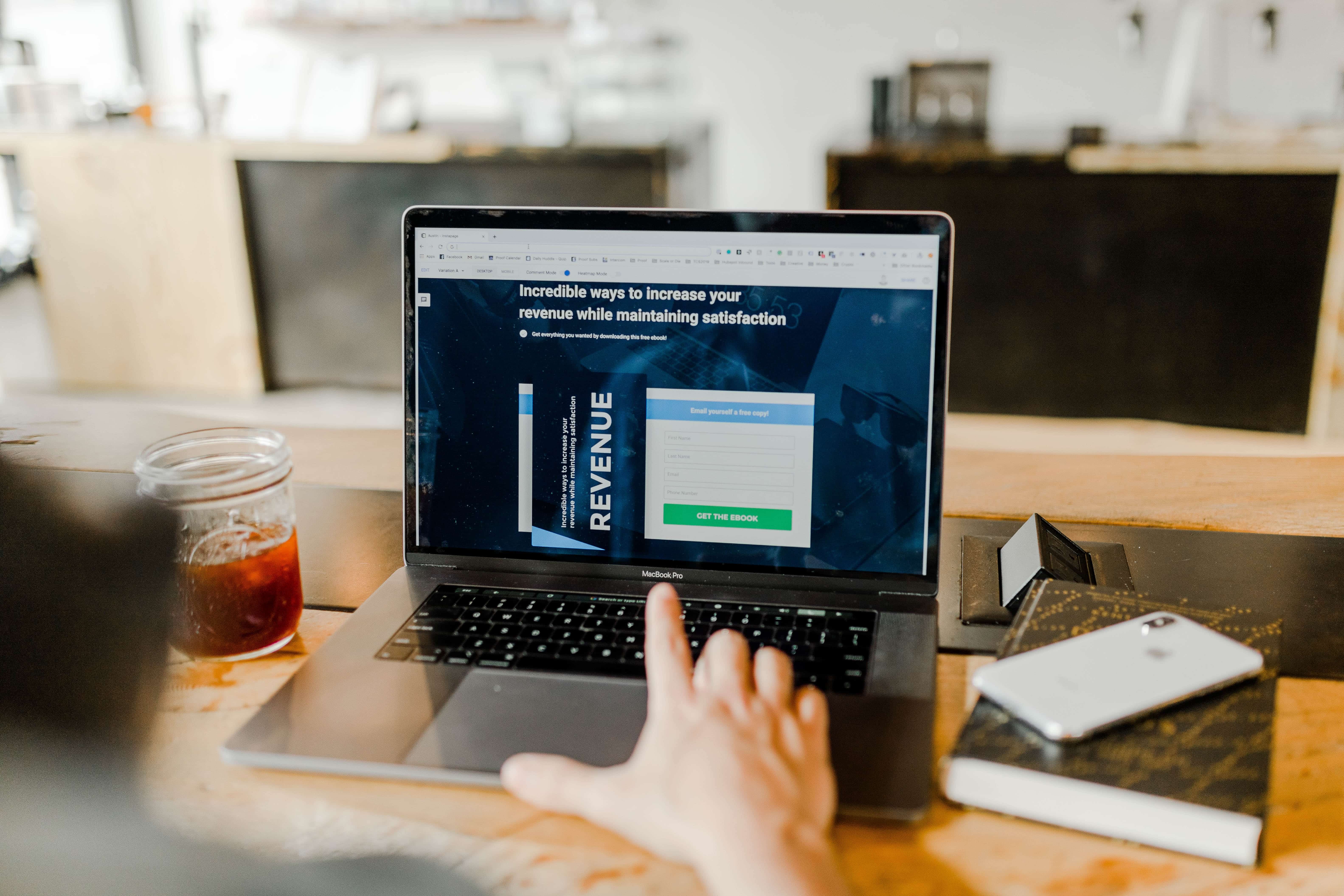
How To Put a Price on Your Products For Profit By 2-4% 💰
What’s the difference between an average pricing team’s pricing for profit capability and that of a world-class pricing team? How do you put a price on your products for profit? Is there a new product development pricing strategy that you should know about?
>Download Now: Free PDF How to hire and Train Pricing All-Stars
Our research shows that an average pricing team generates on average circa 0.5 to o.75% over total revenue each year while a world-class pricing team generates on average an impressive 1 – 4% points over total revenue every year. Hence, a difference in pricing for profit capability is easily millions of pure profit dollars per year.
A world-class pricing team’s superior ability how to price products for profit can help you bank more profit dollars than an average pricing team with capped potential or downward trajectory.
In this article, we will reveal how world-class pricing teams generate significantly more EBIT than average pricing teams. We will provide you with techniques on how to put a price on your products for better profit. Apart from that, we’ll discuss the key traits and attributes required for product pricing as a process. Lastly, we’ll know why average pricing teams can be cost-centres for businesses.
What is product pricing?
Product pricing relates to the procedure of evaluating a product’s quantitative value depending on various criteria. and From cash inflows to gross margins to client demand, the product price has a significant influence on the success and profitability of your organisation. That’s why you should always know how to price your product for profit.
How do you put a price on your products for profit? Why is there such a big difference in performance and productivity?
Well, let’s remove the obvious from the discussion straight away. With that in mind, being a world-class pricing team that consistently achieves profit-scraping pricing goals has little to do with the size of the team.
We find that some of the best pricing teams in Australia are pretty small in size.
Our research shows that smaller, agile pricing teams of about 3 to 4 people on average generate more EBIT growth, buy-in and influence within their organisations than larger and more established pricing functions with 15 – 20 people and in like-for-like industries and verticals.
That means headcount is not a major driver of pricing team inefficiency (even though a lot of pricing team leads out there may tell you it is.)
If headcount isn’t indicative of pricing team success, then what is the secret on how to put a price on your products for profit?
We’ve been asked this question quite a lot by our clients recently, and this is what our extensive research on world-class pricing teams in your industry reveals: A world-class pricing team generates EBIT in the first 3-6 months of starting a new price improvement or optimisation project. So, what does world-class pricing mean?
How to Put the Best World-class Price on Products for Profit
Companies do check the market, study competitors’ pricing and research customer behaviour before they choose how to put prices on their products. Putting a price on products is the cornerstone decision a company will make. It determines one’s product’s success or failure. The right call on pricing can boost your profit while pricing poor decisions can shrink it.
The Best Product 3-Step Pricing Process on Products for Profit
What are the factors to consider when you put a price on your products for profit?
1. The first thing to do is to research the market, your pricing structure, product quality, competitors, and customer behaviour.
What is your market?
You need to know who are your customers, what they want and also, and how your competitor put prices on their products. Answering these questions will help you understand the pricing range of the products you offer. Knowing your market also includes segmentation or dividing the large market into the identifiable segment of your potential customer. It may be by demographics, geographic, behavioural and psychographic.
How much is your cost? What is your revenue target?
Ensure that both direct and indirect costs were covered by the price you set. Evaluate your business and research how to calculate prices based on revenue targets. The mark-up of the product and projected number of quantities to sell must be aligned to your target to achieve your desired revenue.
Where is your market headed?
Understanding the trend of your market will help give you an insight into the future demand for the products. You also do need to research those factors that may impact your product price and sales in the future. Like, taking note of your competitors and their actions, how do they respond to your pricing strategy?
2. Choose the best pricing option for your products for profit.
- Cost-based pricing is a fixed sum or a percentage of the total cost of creating a product. Then that is added to its selling price. This is particularly common in customised products. Industries in construction materials, heavy equipment, car parts, energy companies, and medical equipment or technology generally use a cost-plus pricing strategy.
- Value-based pricing asks what are the value drivers of customers? What are customer problems being solved through your products? Is it your consistent supply of quality products? How attentive are you to customer trends, complaints, and satisfaction? How do you establish a relationship with them?
Is your pricing structure competitive with other businesses in the industry? Is it easy for customers to switch to a readily available competitor that has a similar product? Are you monitoring the number of customer churn and the reasons behind them?
How convenient is it to buy from you? Do you have an online payment or an eCommerce platform? These are just some of the questions that can help you apply value-based pricing. To sum it up, it is how well customers understand their needs and relate the solution to your services.
3. Research price elasticity to gain an insight into your product demand and supply. Then decide on the best pricing transformation strategies to use (avoid overpricing or underpricing items) like:
-
- Dynamic pricing disregards fixed pricing and relies on varying prices using advanced data. Also known as surge pricing, it’s common in the airline, hotel, and transportation industries. It sells products based on creating algorithm models, competitors’ market demands, trends, and changes. Best of all, it can be achieved within seconds.
- Market-Based Pricing is when you developed a product that’s similar to a competitor but still has other features and advantages that customers can’t find in others. That gives you room to set yourself apart as a brand and helps you set the maximum price. In order to competitively price a higher or lower, all of this depends on the current market trends, product design/quality, and buyer behaviour.
- Luxury or premium pricing is about keeping some items priced artificially higher than a competitor’s products. That stimulates customers to think that your product quality is better than the rest of the market. These pricing tactics are closely related to penetration pricing (knowing when to price high or low), psychology pricing or pre-suasion, and skimming strategy. Price skimming is mostly applicable to new products aiming to gain maximum profit in a very short time rather than maximising sales.
New Product Development Pricing Strategy: Why is it time to upgrade your pricing from average to world-class with Taylor Wells?
1. A world-class pricing team can prove its profit value with dollars and cents.
World-class pricing teams frame the profit value they generate so their contribution and presence in the business are paying off and worthwhile. (And they’re in no doubt getting the EBIT growth they promised you.)
World-class pricing teams are intensely aware that they need to get results. They pay close attention to proving the ROI of pricing. They develop tools and tracking systems to help the business understand the profit value they create using pricing for-profit techniques.
The expert profit scraping skills are used to extract the incremental impact their pricing intervention has on profit and loss. They identify the significant effects of pricing new and existing products in the marketplace at an SKU, customer, and segment level.
They develop a market price formula for profit and loss to target profit pricing and generally have the know-how to use a SIX sigma process or controlled experimentation to show the ROI of the pricing function. This includes pricing system implementation and price rises, tests, or larger price simulations and experiments.

Average pricing teams, on the other hand, tend to lack a scientific process in their investigations, including data skills and domain expertise to track pricing performance in all its dimensions.
Many pricing teams find it difficult to measure the impact of price change on profit and loss. Fewer still know about six sigma pricing and don’t set up or implement price trials and experiments. Neither do they set up a price data architecture and visualisation tracking tools?
They have a razor-like focus on how to put a price on their products that quickly but safely brings better profit using informed identification of low-risk revenue and margin opportunities.
They often have their own diagnostic tools and pricing for profit frameworks to get to the root of the cause of problems quickly. Generally speaking, it’s quicker (and less expensive) than most tier one consultant.
They possess domain expertise and a unique analytical capability on how to put the right price on their products for better profit. Aside from that, they know what can be done to capture and convert them into EBIT.
World-class pricing teams all love proof.
They have an evidence-based approach on how to set the right price for their products and create better profit. They only commit to a certain course of price action or direction when they have proof of pricing for profit.
This means they’ll be setting up price trials such as socialising new ideas and running pilots and experiments to prove the differences between revenue optimisation versus profit maximisation. That includes price and quantity level by product and segment.
World-class pricing teams also use their strong diagnostic capability. They add this to their innovative solution delivery and scientific rigour to help their sales team identify previously unrealised margin opportunities faster than their industry peers.
Average pricing teams, conversely, can take anywhere between 2 to 5 years to show proof of concept for their work. It takes even longer if there’s a major pricing transformation process.
More often than not, there’s been a lack of focus on generating EBIT or achieving real results. Pricing teams turn over quickly. As a result, high levels of frustration and low morale occur as the teamwork cross purposes and fire-fights lots of issues but never really achieve their goals or targets. There are lots of activities, but very little EBIT to show for it.
2. To know how to put the best price for your products for better profit, consider World-Class Pricing! Taylor Wells is here to assist you.
World-class pricing teams take the initiative. They don’t wait for tasks to be given to them and get things done off their own bat. In fact, they’re constantly trying to improve, learn, and adapt pricing systems to industry nuances to increase profit opportunities.
It’s not their habit to rest in the safety of past successes. They demonstrate intellectual curiosity and tap into the diversity of viewpoints. This helps them find the best solutions for new product development pricing strategies and other problems at hand.
They’re keen to capture the price cost profit using profit on selling prices by building a minimal viable product first. Since there is no point in blowing out costs on new pricing software early on, they’ll prioritise commercial requirements.
They understand multiple stakeholders’ views and concerns about changing legacy pricing or broken processes. This means that they design customised price structures and architecture to ensure the foundation of a new pricing-for-profit system that has market traction.
They are not complacent.
Rather, they are resourceful, practical, nimble, and aware that the market is tough and changing rapidly. In short, they know they have a duty to stay current and up to date.
They’ll give impartial advice on the best systems and tools to buy based on your commercial requirements. And they’ll stop you from blowing millions of dollars on the wrong pricing strategy or software to help you choose the right ones for your business.

3. A world-class pricing team solves difficult pricing problems quickly.
They have a breadth of domain pricing knowledge and think deeply about the impact of changing business models and operations on pricing and revenue models. They have the right mix of skills, styles, and capabilities on the team to solve the problem.
World-class pricing teams fix problems by learning about your business, market, and customer base inside out. They develop customised pricing for-profit analytics, tools, and innovative strategies like value-based customer segmentation skills.
They engage in scientific customer value discovery to support current sales and marketing efforts. They’ll identify and measure potential value drivers along multiple dimensions (product, service, company, terms, operations). They also advise you and the sales team on the optimal price points to sell by product, customer group, and region.
Aside from that, they’ll let you know about the absolute best time to announce a price rise to customers while avoiding volume or revenue loss.
Average pricing teams conversely tend to be quite siloed and prescriptive with what they do and don’t do. They can be data-focused and see things through a formula for cost price when a profit per cent is given. They also tend to focus on legal price-volume analysis and margin or price cost profit reporting.
Thus, they often lack the curiosity to analyse high probability margin expansion opportunities for the sales teams, like cross-selling or new business opportunities. As a result, they struggle to achieve their target profit pricing goals. They don’t analyse and interpret key interactions between price, product mix, volume, discounts, customer value, and demand.
4. A world-class pricing team is a highly regarded executive leadership team member.
They don’t need grand titles and status to get ahead in large organisations. In fact, they are change agents with a mindset for pricing for profit and value. They adapt their thinking, management style, and communications very quickly to achieve complex pricing and profit outcomes for the business.
Company leaders seek their advice on profit-scaping pricing options and input on important business decisions. Stakeholders and management respect their intellect and commercial acumen. They speak openly about big issues and care about achieving the best outcomes for the business.
Unlike average pricing teams, world-class pricing teams typically deliver EBIT results for their company in the first 3 – 6 months. This includes pricing for profit, diagnosing key issues, initial hypothesis testing, and capturing quick revenue wins (or low-hanging fruit) through risk-free price optimisation.
A factor of pricing team success that is more important than size is team mix, composition, and capability (individual, team, and organisational).
There is a significant correlation between the results an average pricing team generates and their organisations. Hence, a pricing team’s performance is heavily influenced by organisational power structures and cultural norms.
If pricing is not considered a priority and is consistently put last on the executive leadership agenda, a pricing team will struggle to achieve profit-maximising pricing options.
An organisation that doesn’t pay close attention to its pricing tends to have very limited systems enablement and training support. Additionally, staff also shows a lack of commitment to any pricing initiative and bail out of price trials too quickly before they’re even up and running. This, in turn, leads to unrealised revenue and margin opportunities. Plus a culture norm that tells staff that new ideas are not accepted or even tolerated in the business.
How to Put a Price on Your Products for Profit: Rule of thumb on size or headcount
1. You need at least one pricing manager for every $500M and one analyst for every $100M revenue.
Thus, if you have a $500M business revenue, you need one pricing manager and 1-2 senior pricing analysts. You’ll also want 2-3 pricing analysts. But there’s a big caveat. Headcount changes a lot depending on your systems, tools, and business culture.
2. If you have a documented pricing strategy, good systems, and progressive pricing for-profit culture (i.e., teams keen to implement advanced pricing principles and analytics), you’ll need fewer people (about half this number).
3. EBIT growth is not a function of headcount or experience.
And experience in pricing is becoming less and less important to businesses transitioning to new models of operations. This includes new ways of thinking about product pricing development processes and value to achieve shared outcomes and results.
The size and composition of your pricing team are commensurate to business strategy (scalability and position in your industry), systems capability, and business culture.
What matters is team mix and capability – namely, drive, persistence to get results, and expert and diverse problem-solving capability.
〉〉〉 Get Your FREE Pricing Audit 〉〉〉
Bottomline: How to Price Products for Profit
We discussed five things that make a world-class pricing team that generates significantly more profit than average pricing teams. Namely, their ability to:
- Generate EBIT in the first 3-6 months of starting a new price improvement or optimisation project
- Prove their profit value in dollars and cents
- Take the initiative to create the best product pricing process
- Solve problems quickly to set the best price on products
- Garner buy-in and support for alternative pricing approaches
We discussed how smaller, well-composed pricing teams deliver more EBIT on average. This is in comparison to their peers in relative industries with 15+ members on the pricing team.
A key implication here is that world-class pricing teams are very similar to startup teams. Businesses should consider this when they hire new pricing team staff.
A world-class pricing team consists of diverse skills, styles, and capabilities. When coupled with shared goals and beliefs, they become more than a price administration resource.
For a comprehensive view on maximising growth in your company,
Download a complimentary whitepaper on How To Drive Pricing Strategy To Maximise EBIT Growth.
Are you a business in need of help to align your pricing strategy, people, and operations to deliver an immediate impact on profit?
If so, please call (+61) 2 9000 1115.
You can also email us at team@taylorwells.com.au if you have any further questions.
Make your pricing world-class!
Related Posts
Leave a Reply Cancel reply
Categories
- marketing strategy (26)
- Organisational Design (14)
- Podcast (114)
- Pricing Capability (87)
- Pricing Career Advice (10)
- Pricing Recruitment (19)
- Pricing Strategy (290)
- Pricing Team Skills (13)
- Pricing Teams & Culture (24)
- Pricing Transformation (47)
- Revenue Model (25)
- Sales Effectiveness (27)
- Talent Management (7)
- Technical Pricing Skills (35)






